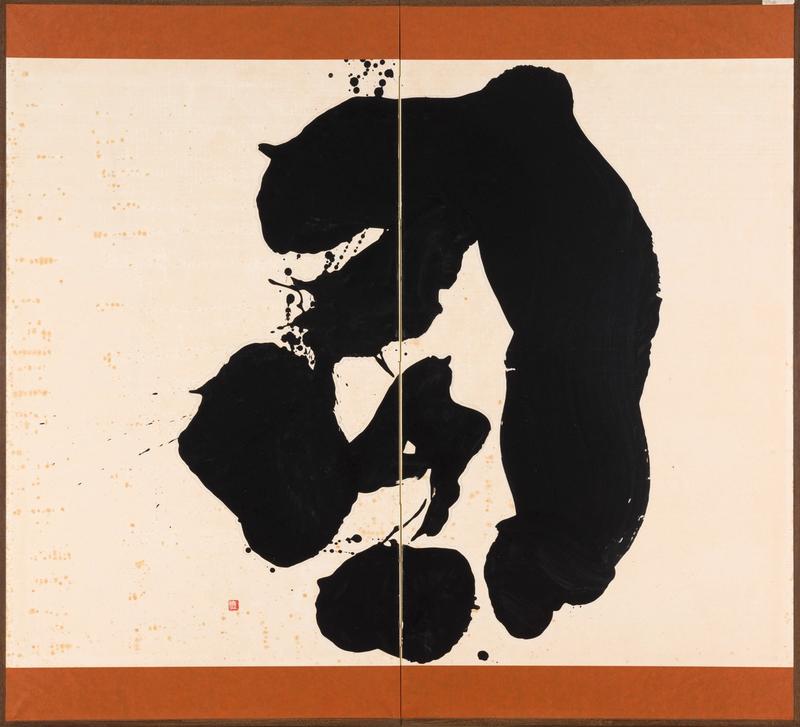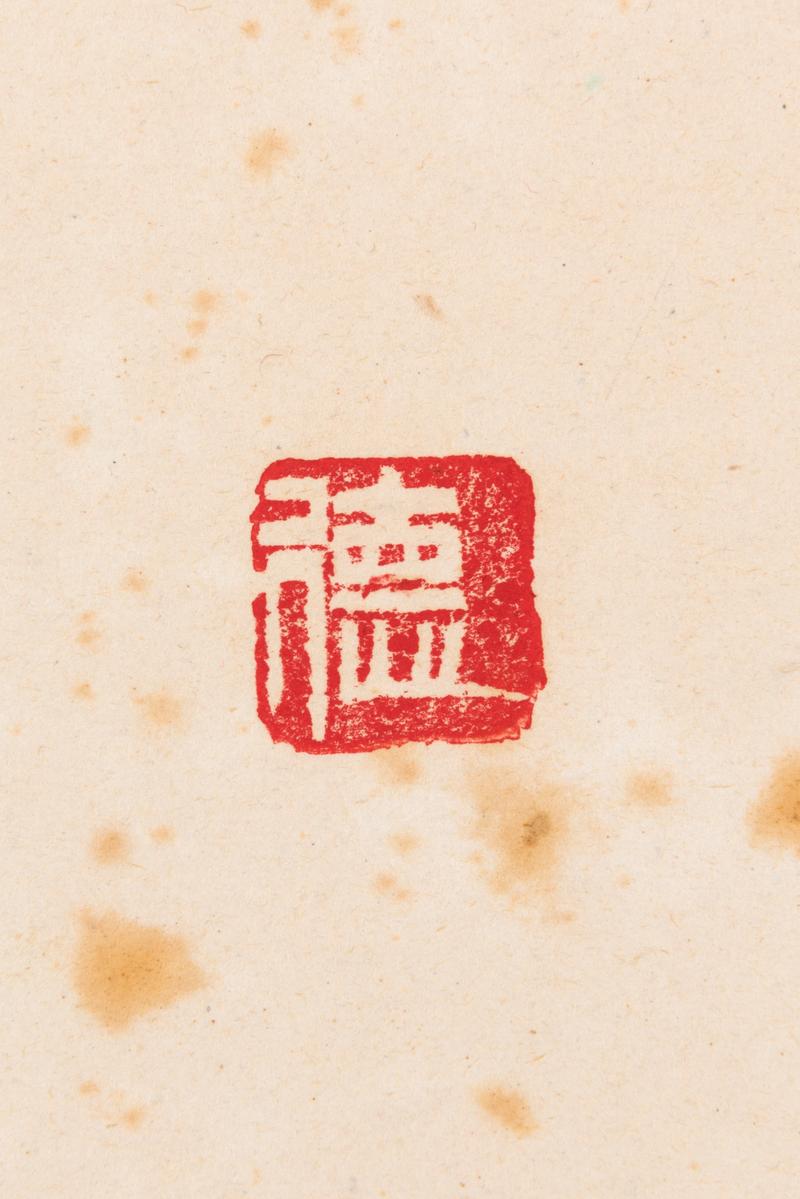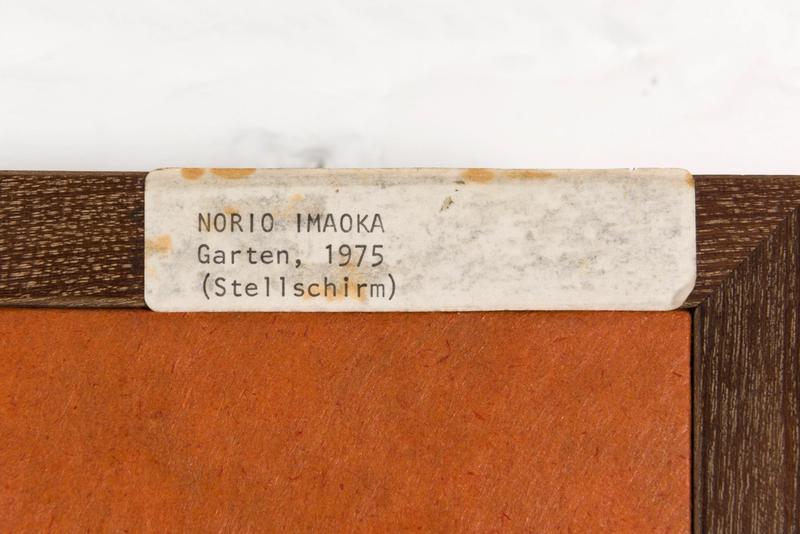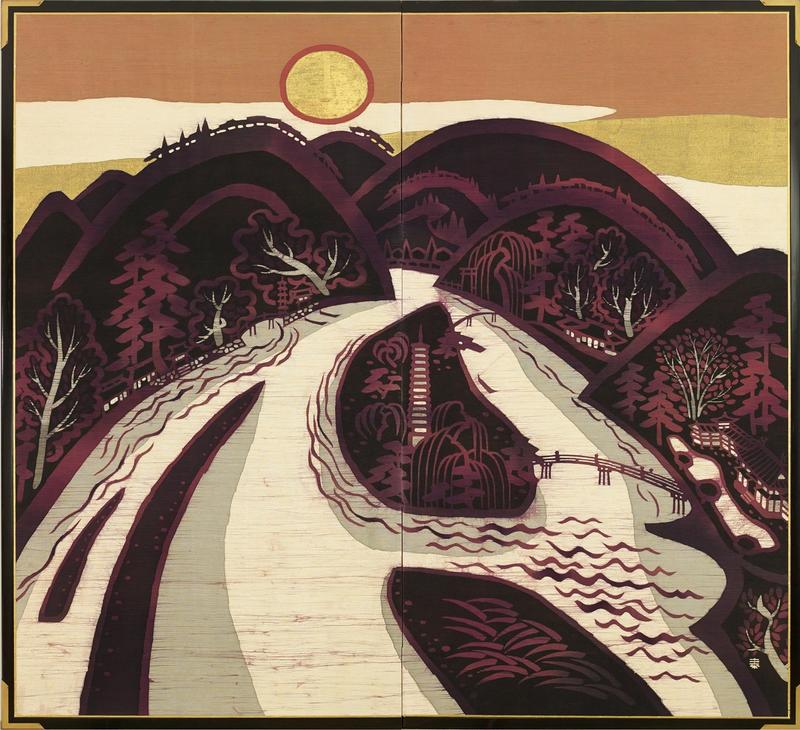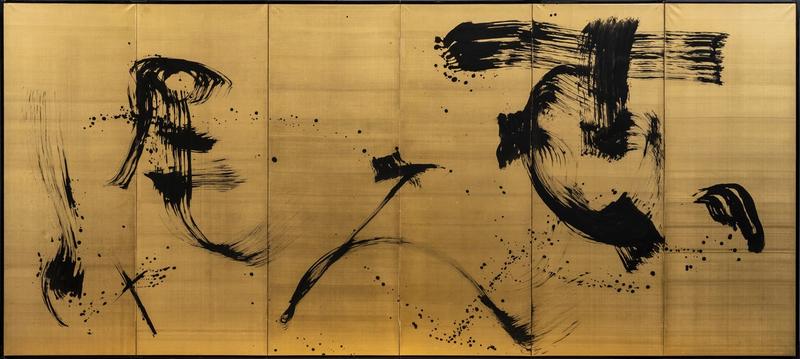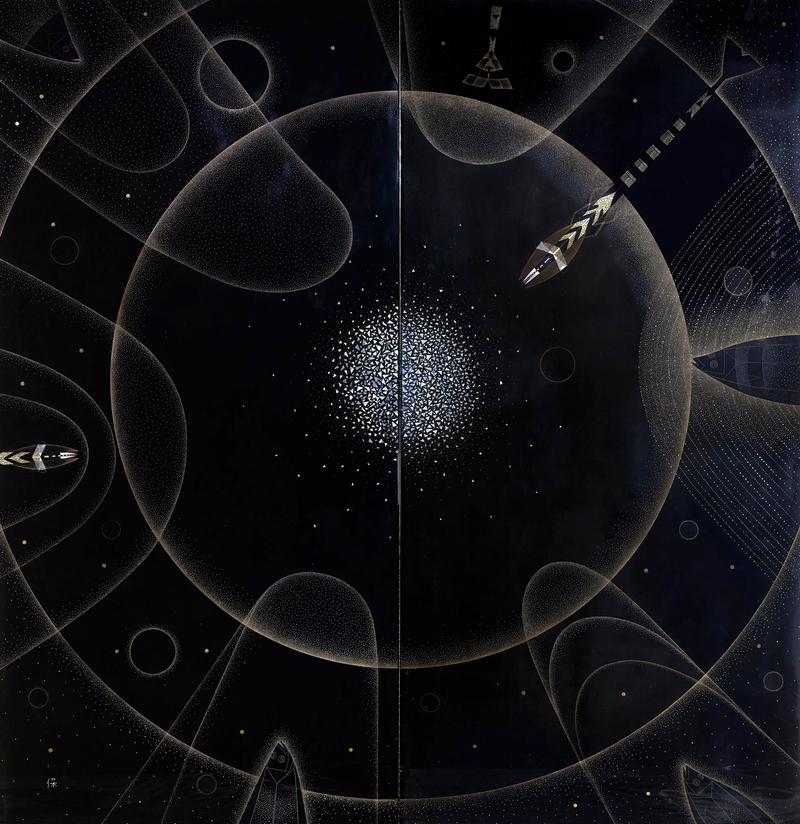A screen with abstract calligraphy “Garden”
#7813
Bokunjinkai
Dimensions: Painting: H. 143cm x W. 184cm (52½" x 74¼") Screen: H. 172cm x W. 188.5cm (67¾" x 74¼")
A two-fold screen painted in ink with abstract calligraphy “Garden” by Imaoka Norio (1929 -1999)
Seal: Nori
A label on the reverse inscribed in Japanese: ‘En’ (Garden), Imaoka Norio, Kyoto, Bokujinkai;
An exhibition label inscribed in German: Norio Imaoka, Garten (Garden), 1975 Stellschirm (folding screen) , Japan, 1975
Exhibited in:
A travelling exhibition in Germany, circa 1976-1978;
Jisen sakuhinshu Imaoka Norio no sho (Calligraphy of Imaoka Norio, selected by the artist), Shimane Art Museum, 31 July to 10 August, 1993
Published in: Jisen sakuhinshu Imaoka Norio no sho (Calligraphy of Imaoka Norio, selected by the artist), exhibition catalogue (Japan, 1993), no. 30
Provenance: Collection: Town Community Centre, Koryo, Shimane Prefecture, Japan
Imaoka Norio is a member of the legendary avant-garde calligraphy group Bokujinkai (Society of Ink People), founded in 1952 by Morita Shiryū (1912-1998), Inoue Yūichi (1916-1985), Eguchi Sōgen (1919-), Sekiya Yoshimichi (b.1920) and Nakamura Bokushi (dates unknown). These groundbreaking artists advocated the emancipation of the calligraphic line away from its traditional form and also experimented with unorthodox materials.
Imaoka first studied calligraphy under Ueda Sōkyū (1899-1968) who was a charismatic teacher introducing his talented pupils to the art of avant-garde calligraphy. Meeting with Morita Shiryu in person at a lecture held at Shokokuji Temple in Kyoto in 1951, Imaoka was moved by the striking energy and vision of Morita and his works. Inspired by him, Imaoka soonmoved from Shimane to Kyoto, to became a pupil of Morita and joined the Bokujinkai group just after its foundation. While he produced calligraphy works as an artist in the evenings, he taught at a primary school during the daytime for decades. Perhaps for this reason, Morita described that Imaoka’s works reflected the artist’s warmhearted, humane personality, suggesting a somewhat earthy atmosphere which resulted from his time spent with children.
Eventually inheriting the legacy of his maser Morita, Imaoka produced a number of dynamic calligraphic works, which often indicate the interplay between traditional Japanese calligraphy and Euro-American abstract painting. His works were exhibited both in Japan and overseas including Germany, New York and Portland, USA.
[I do not believe] great “calligraphy” refers to just skilfully written works. Rather, what evokes the power of humans, what manifests a calligrapher’s way of life – such works are [in my opinion] real, great “calligraphy”. Just tracing the forms of fine-looking characters is not true calligraphy. Express yourself and your life through a brush onto a paper, then we can start talking about the art of “calligraphy”.(Imaoka Norio, 1995)
As expressed in his words above, for Imaoka, real ‘calligraphy’ should not be just aesthetically fine one, but rather, it should manifest the ‘cry of human souls’
